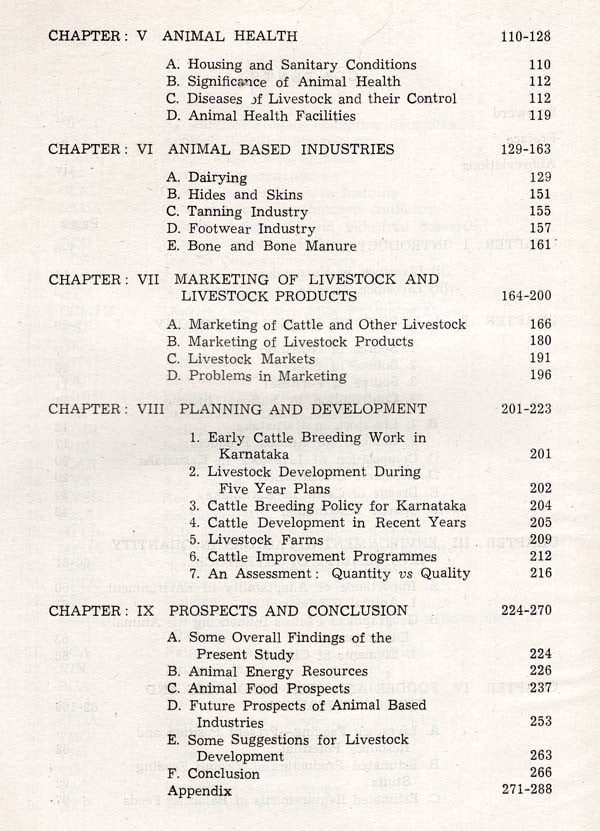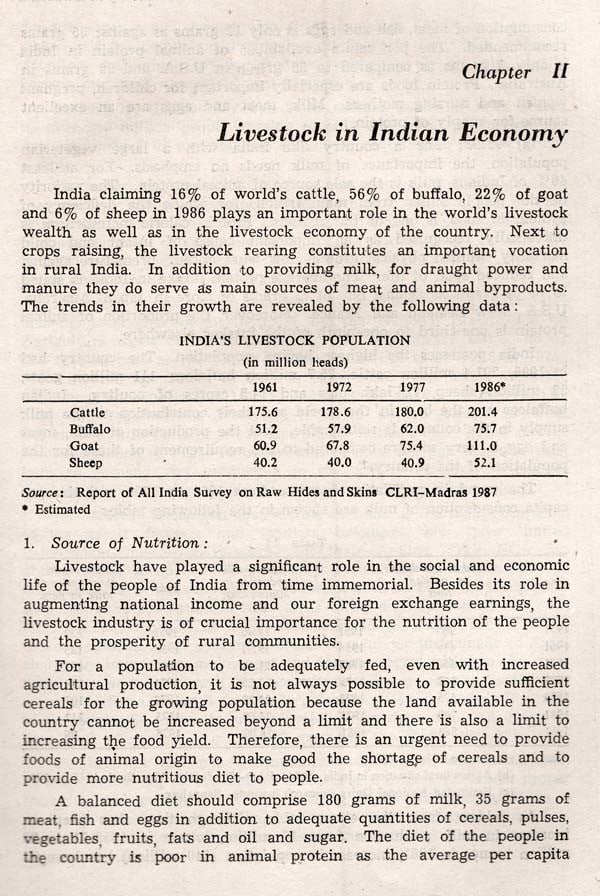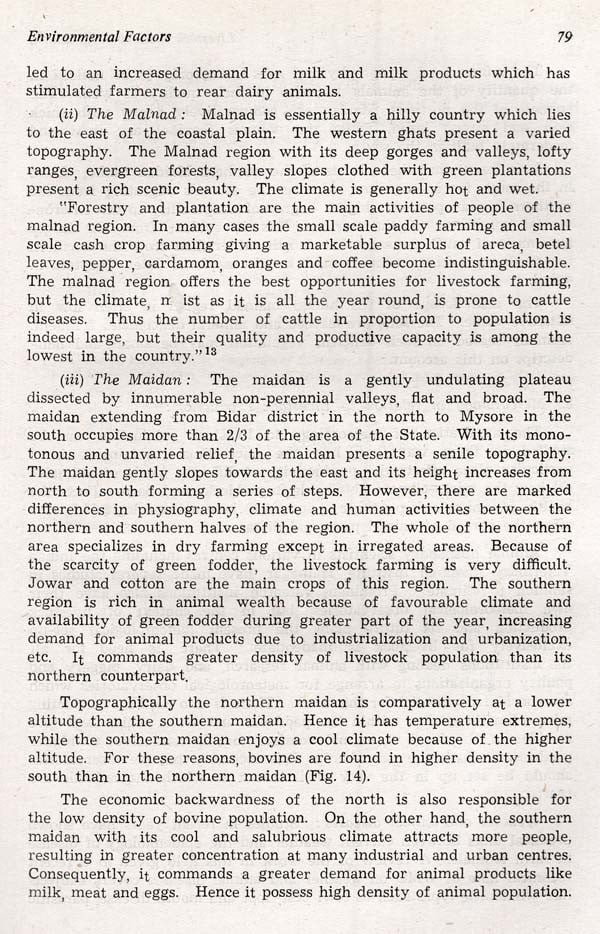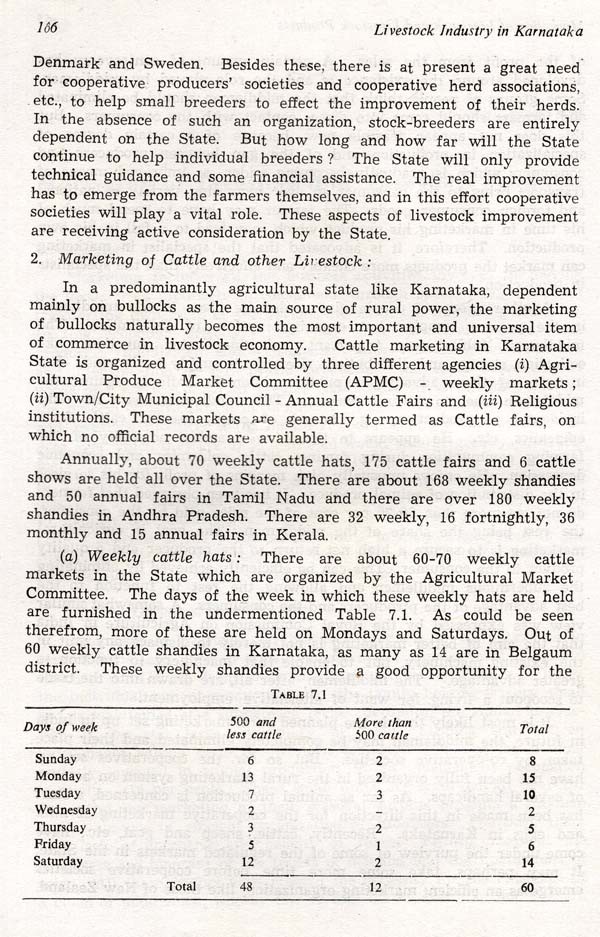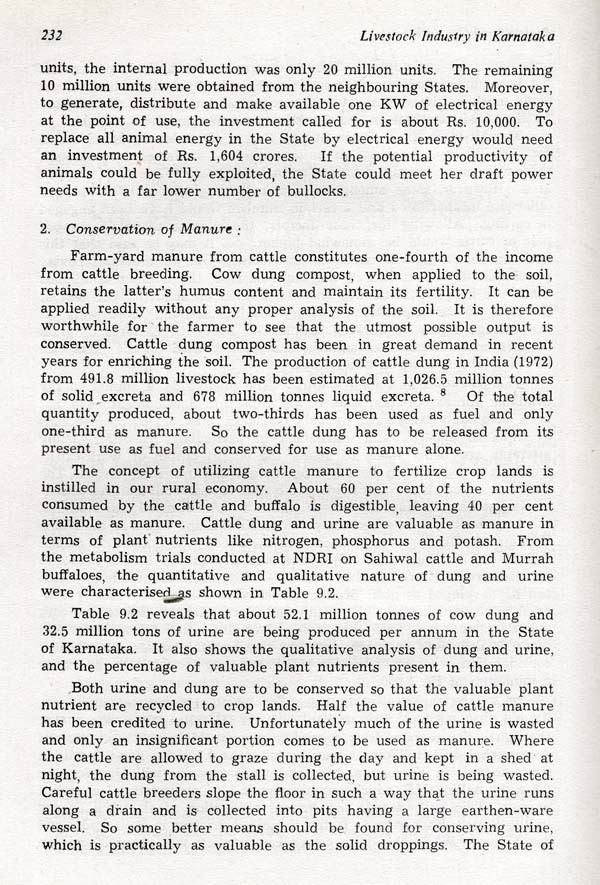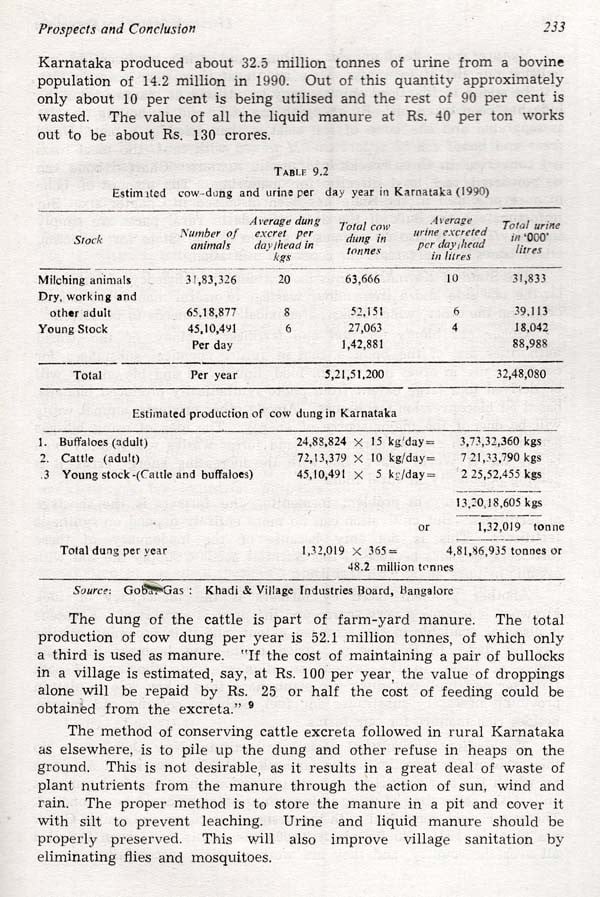
Livestock Industry in Karnataka (An Old and Rare Book)
Book Specification
| Item Code: | AZE211 |
| Author: | K. Ranganath |
| Publisher: | UNIVERSITY OF MYSORE, MYSORE |
| Language: | ENGLISH |
| Edition: | 1994 |
| Pages: | 300 (Throughout B/w Illustrations with Maps) |
| Cover: | PAPERBACK |
| Other Details | 10.00x7.50 inches |
| Weight | 490 gm |
Book Description
The book brings out clearly the relation between geography and the quantity and quality of livestock. The density of bovine population is analyzed in relation to climate, crop pattern, human population, land holdings, irrigation and availability of fodder, as farm residues, forest products and pastures. The quality of animals in relation to temperature and soil is very well presented. 2. Fodder and Feed Supply: Livestock productivity depends on the fodder and feed supply. The book provides data on the requirements of dry fodder, green fodder and concentrates (feed) on the availability of each of them and what needs to be done to meet the deficiencies. The suggestions made to improve the fodder and feed supply are worth considering particularly because the demand for milk and milk products is increasing fast. The author calls for a green revolution" in fodder. production to usher in White Revolution in Karnataka. In addition to the conventional feed resources, non conventional feeds have been the purview of study.
As in the country as a whole, the state of Karnataka is endowed with a significant asset of livestock wealth, which in its number and variety could be favorably compared to any other state in the country linking crop production, with livestock raising enables fuller utilization of farm by-products, conservation of soil fertility, increase in income and fuller employment. Thus animal husbandry is best considered as part of agricultural system, using agricultural wastes to feed animals, and animal products in turn as a source of food, fuel and fertilizer. It is paradoxical to note that even though the state of Karnataka possesses rich animal resources the returns from these are very meager Both milk and milk products, meat and meat-products are not produced either in sufficient quantity or in required quality. The demand for these products is rising with rapid increase in population and urbanization. So the question of development of livestock industry therefore, needs to be examined in depth in the light of the requirements of the state.
The formulation of well defined action oriented development programmed needs extensive and intensive sect oral studies as well as intersects oral reactions of the area concerned. In such studies it will be necessary to take note of economic, social and physical differences in the different parts of the state and to structure sect oral programmers, area wise in an inter-related manner so that the cumulative results will lead to the minimization of disparities and at the same time lead to the maximization of benefits for the people and the state as a whole.
In the transmission of sophisticated technology to the farmers. extensive education and training of farmers play an important role.
There was a time when India was famous for her riches and no less for the abundance of milk and its products. The object poverty of the people, rapid increase in population and the two world wars put back the hands of the clock. Agriculture, including animal husbandry, is still the mainstay of millions and to study and discuss the problems related to the development is not only desirable but also necessary. Thus the economic importance of cattle is immense. There is so much to be done, and so little has been done, that aspirants for animal husbandry work should draw inspiration to take up this neglected work with determination. Few other industries in India can approach the combined out turn of animal-cum-plant husbandry. With further development of the excellent breeds of cattle still existing in India, the animal husbandry products may assume much greater importance in India than in other countries.
With a total area of 1, 92,204 sq. kames. and a population of more than 45 million (1991) Karnataka is the sixth largest State in India in terms of area and eighth in terms of population. It is the second largest State in South India next only to Andhra Pradesh.
**Contents and Sample Pages**


